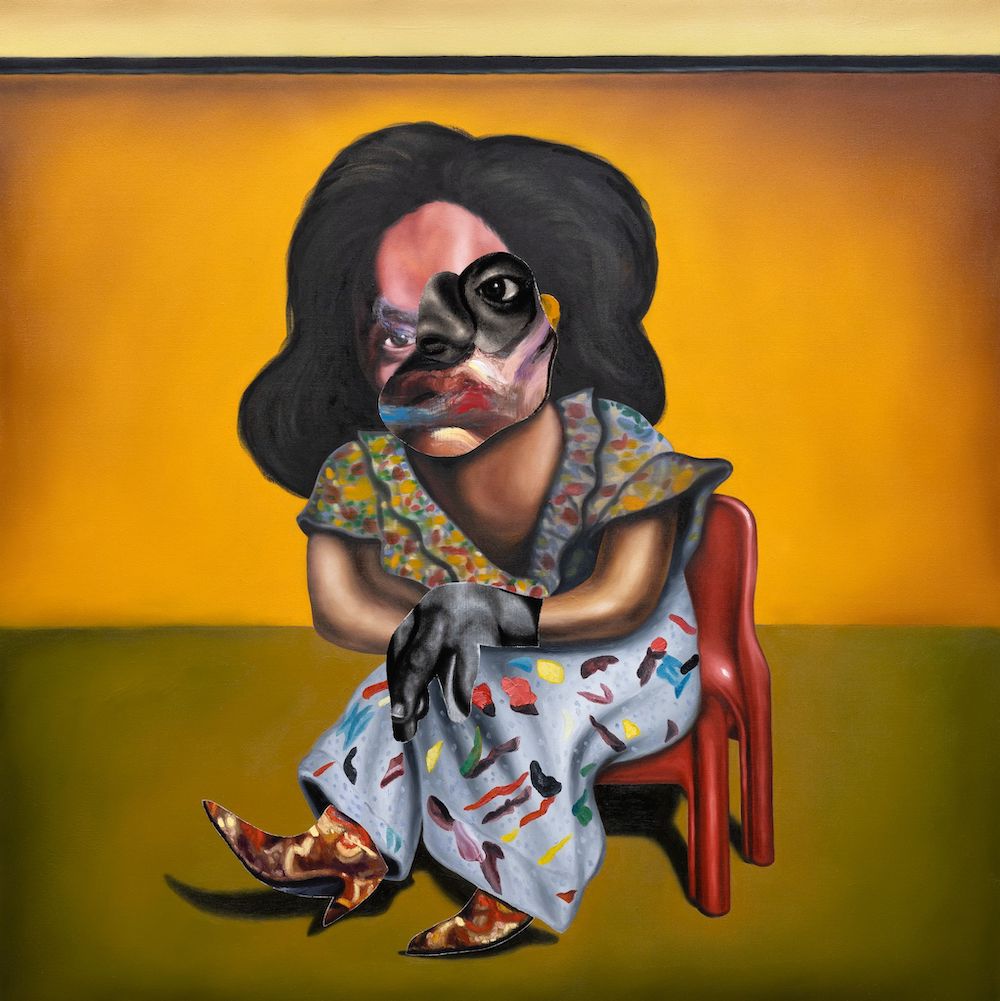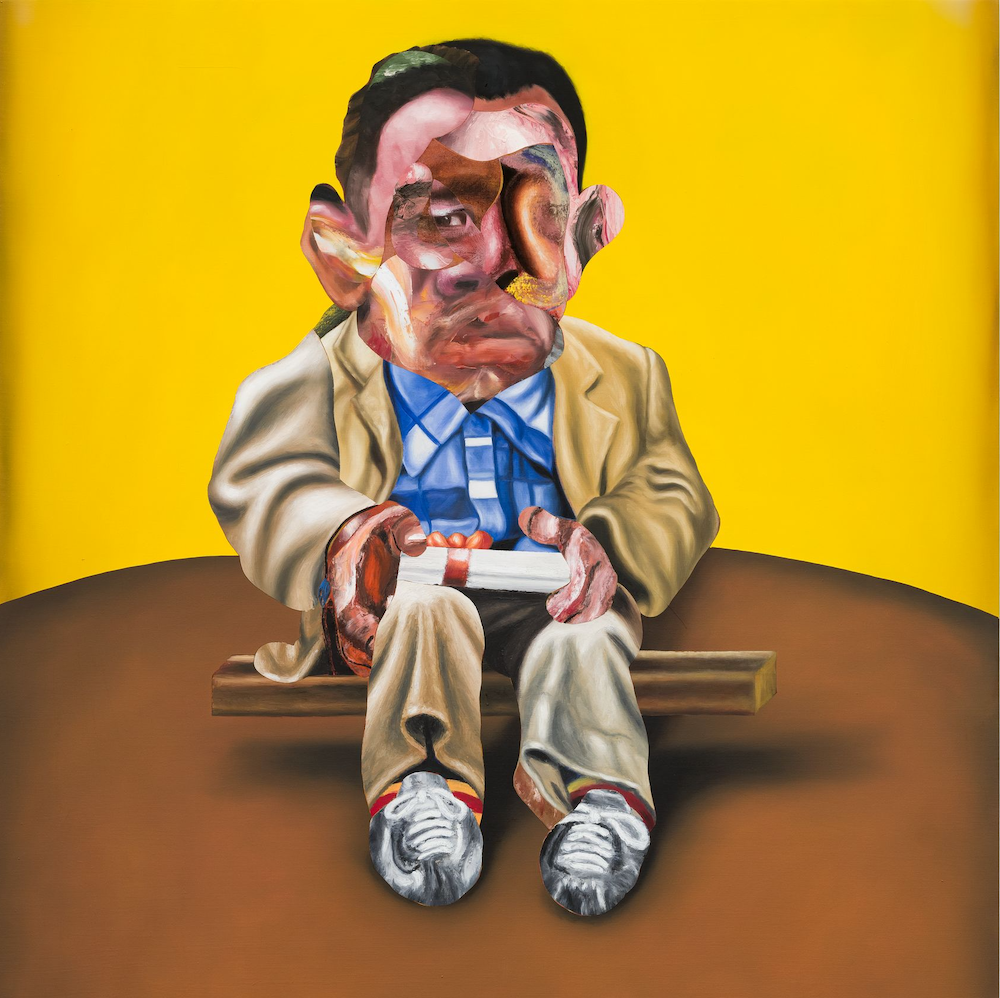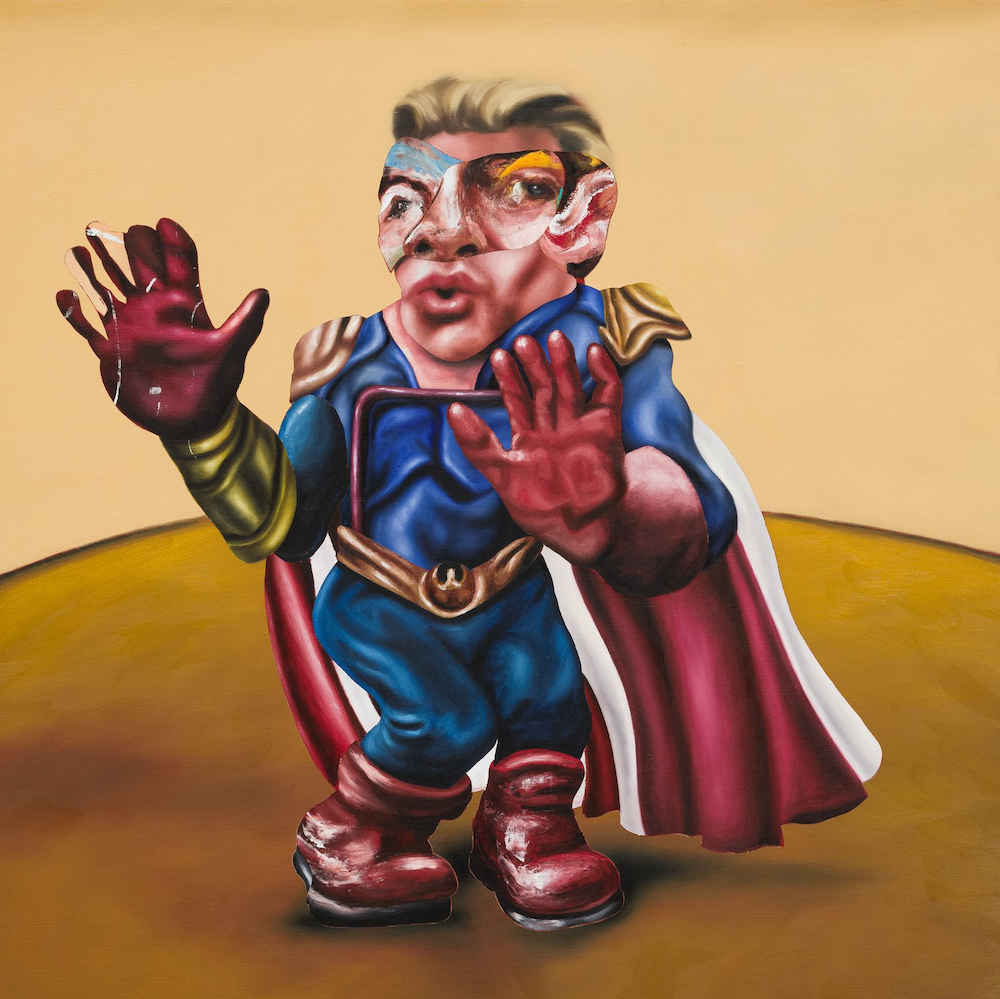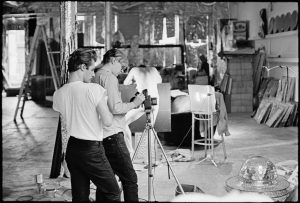The contemporary artist Nathaniel Mary Quinn on the lost art of storytelling and the divine nature of integrity

The collage-like portraits of contemporary art star Nathaniel Mary Quinn bear witness to the fractured and temporal nature of identity, blending myriad pop culture references with ephemera from his own personal history in a way that is intensely emotionally impactful, often drawing upon a past that is not without considerable trauma. It’s now fairly well documented in art circles that Quinn was born on the wrong side of the tracks in Chicago, lost his mother as a teenager and was subsequently abandoned by his father and brother – his scholarship to a renowned military academy becoming a literal lifeline to any kind of future, let alone one that has witnessed him being celebrated as one of the most important artists of the modern day. His current show Scenes at Almine Rech applies his characteristically bold, aphoristic and utterly distinctive painting style to near-mythical cinematic icons as disparate as Forrest Gump and Captain America in order to explore empathy, vulnerability and what it means to be human in the contemporary paradigm – melding nostalgia for classic cinema with the beautifully savage aesthetic of his personal hero Francis Bacon in the process.
Here, the artist gives Port a unique insight into his art practice, laments the lack of authenticity in contemporary storytelling, and tells us why staying true to your inner child keeps courage alive.

Where did the inspiration for Scenes come from?
Today, because of social media, everything is really fast – things last for two weeks and then they disappear. There is no real attention to how well made content is any more, or to its meaning. There is no sense now of sitting with something and meditating upon things. They used to say that money is the root of all evil but now we are living in an age of attention being the root of all evil – everyone wants attention, and people will do anything for attention. It seems that with a lot of things that get made now it’s just all about wanting likes, wanting quick visibility, wanting to see how many times something gets shared. And something about all of that just really bothers me, so I wanted to do a show with a sense of nostalgia for the days when stories were really good, when characters were meaningful, when there was real thought put into things, and stories had characters in them that operated as real reflections of humanity. I miss those times.
It sounds like nostalgia for a time when we were less distracted…
Right? Yeah. Because of social media, you know, people don’t really have the time to invest now. There used to be a time when you had appointment television – you had to be home on Wednesday at six to see the show you loved. There were no streaming services. If you didn’t see it on that Wednesday night, you had to wait next year to see it repeated, or something like this. But because of appointment television, you took it more seriously. It was a cohesive force in society. And I think as a result of that, the stories being made were made with more intention. There’s a piece in the show based on a film called Awakenings and it’s based on the true story of a doctor who helped these patients who suffer from some type of catatonia disease, where they become like statues trapped in themselves, and he does some kind of medical procedure and for one week the patients are awake. It’s an older film, but you can really sense the shared vulnerability and the fragility of the characters. Today, you still have some things that come out that are good and made by people who have integrity, but most content creators don’t care.

There are some superheroes in here, particularly in the work entitled The Clash – what interests you about them?
Yeah, The Clash is essentially an amalgamation of body parts pulled from superheroes.
The original Marvel stories by Stan Lee are just such great stories, and they are stories that really reflect humanity. I always loved Marvel as a kid, and I think they did a brilliant job with the first and second phase of the MCU, so I was moved to make a work about it. I mean, one of the key things of these comic book characters and these stories, is that there is always this element of mutants trying to find ways to live with human beings – that’s always a running theme. That’s why they’re portrayed working for the government and doing espionage work, and that kind of thing – it’s a way to fit in, so they are not seen as a threat but rather can be seen as an assistance to the public. There’s another piece in the show based on the show The Boys, which is an example of a brilliant contemporary show. It’s about these superheroes that are like the celebrities of the world and basically make all the media. However, these superheroes are also above reproach, so it doesn’t matter if they mistakenly kill somebody. The painting is of a character called Homeland. He’s indestructible. He’s impervious to pain. Nothing can stop this guy. But his Achilles heel is his unwavering need for the public’s love.
Both these works seems almost fused with Francis Bacon. His influence looms quite large in the show…
When I was in London earlier this year, I went to the Royal Academy of Arts and I saw the Bacon exhibition Man And Beast, and that was the first time I had seen so many of Bacon’s works for real. I cried throughout the entire exhibition. I was just blown away by it. Especially the body of work he made during the 60s. Man, he was dancing. He was in his groove. That exhibition has made an indelible mark on my art practice. I learned so much from it, and I started to find ways to allow that exhibition, and his work to be almost a palpable influence in my practice. I’m just learning from his works, know what I mean? I’m not trying to make works like Bacon.

You’ve spoken before about art being liberating, what do you mean by that?
I personally believe that all people are born like kings or queens, you know? It’s really like you are born powerful and you grow up and then you learn to become peasants, even slaves. I mean that you learn to become weak. You learn to become fragile, and you lose your power – you lose your courage, you lose your curiosity. As an adult, you lose the things that made you a king and a queen when you were a kid. Children are curious. They’re courageous. They don’t get caught up in societal belief systems. And I think it is paramount as an artist to fight to keep that child alive in you, and fight to keep that courage alive.
Do you feel connected to your inner child when you paint?
Essentially when you paint, you become a kid and you just play, and playing is work – it’s labour, and it’s about navigating different ideas and not being afraid of making mistakes, you know? I think that freedom is where the magic is. The magic is right there. You become a peasant when you get any kind of success and then you start to think you’re some kind of rock star – you go to the fancy clubs, you buy into the fashion and you become the embodiment of brands and materialism. That’s to me is exactly when God leaves the room, because you are not that – you are an artist, and you should be committed to the work.
Nathaniel Mary Quinn’s SCENES runs until November 12, 2022 at Almine Rech London




